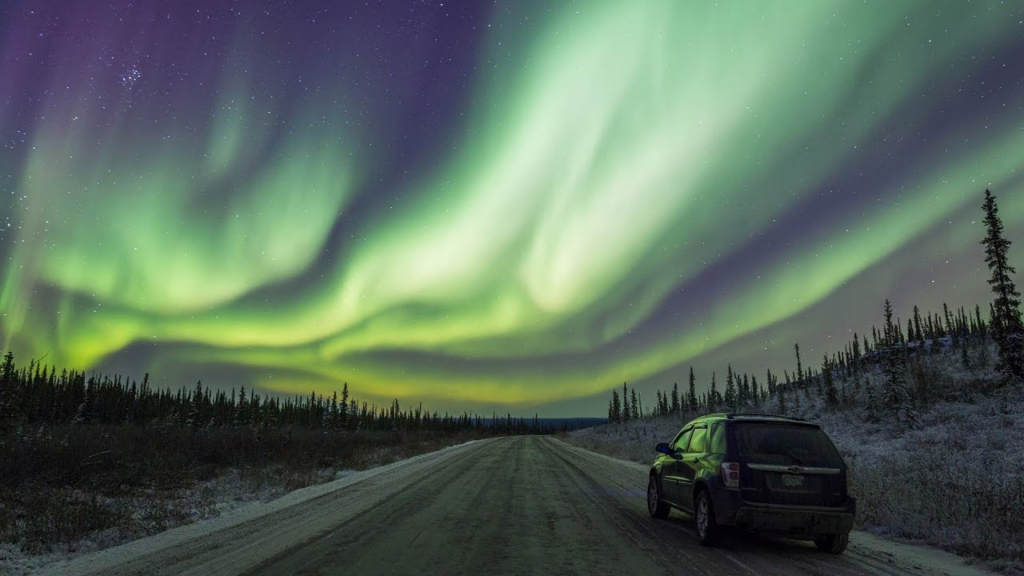For ages, the Aurora Borealis (Northern Lights) has captivated viewers. The physics underlying this celestial ballet of light flowing across the night sky is as interesting as the sight.
From ancient mythology to current understanding, we’ll investigate the complicated interaction of particles, magnetic fields, and atmospheric factors that create this cosmic symphony of light.
Particle-Magnetic Field Dance
The Northern Lights are a beautiful display of Earth’s atmospheric dynamics thousands of kilometers above us. Our Sun starts their adventure 149.6 million kilometers away.
Solar wind—charged particles from the Sun—continues. Solar flares and coronal mass ejections accelerate the solar wind, sending particles toward Earth.
Electrons and protons travel up to 1000 km/s toward Earth. Our planet’s magnetic field, mostly from its core, shields most of these particles.
However, Earth’s magnetic field lines direct certain particles to the polar regions. This is why auroras are mostly seen in the North (Aurora Borealis) and South Poles (Aurora Australis).
These high-energy particles crash with oxygen, nitrogen, and other atoms and molecules in Earth’s upper atmosphere. This interaction excites atmospheric particles’ electrons.

Photons are released when excited electrons return to their natural state. These innumerable photons glowing in the night sky create the stunning aurora.
Atmospheric Colors
The type of gas particles and height at which they collide influence the vast range of hues observed in the Northern Lights, from green, yellow, and red to blue, purple, and even white.
Oxygen molecules 60–150 kilometers above Earth provide the most frequent hue, a vivid yellow-green. Oxygen at 320 kilometers can cause a rare red aurora. Nitrogen generates blue or purplish-red aurora.
Charged particles interacting with Earth’s atmosphere determine aurora intensity. More particles mean brighter, wider auroras.
Northern Lights
The Northern Lights are a once-in-a-lifetime event. Understanding their science enhances the experience. Darkness, clear skies, and great solar activity are needed to see this.
The Northern Lights are best seen in winter, from September to April, when evenings are longest. Norway, Iceland, Canada, and Alaska are popular Arctic Circle sites for seeing them.
Using solar wind and planetary magnetic activity, numerous sites provide real-time and anticipated aurora activity for aurora seekers. These and local weather predictions might help you schedule and locate your Northern Lights expedition.
Stunning Northern Lights
From ancient watchers who saw heavenly deities in the aurora’s shifting colors to current scientists who grasp the complicated interaction of magnetic fields and charged particles, the Northern colors have long fascinated.
The Aurora Borealis reminds us of our connection to the Sun and the universe as we explore our solar system. They’re a breathtaking sight and a meaningful connection to nature.
